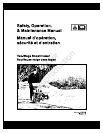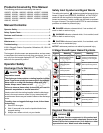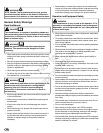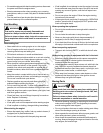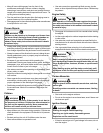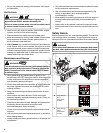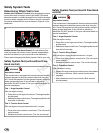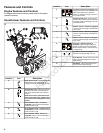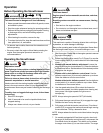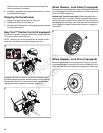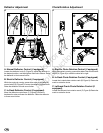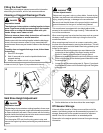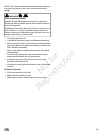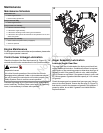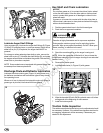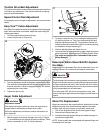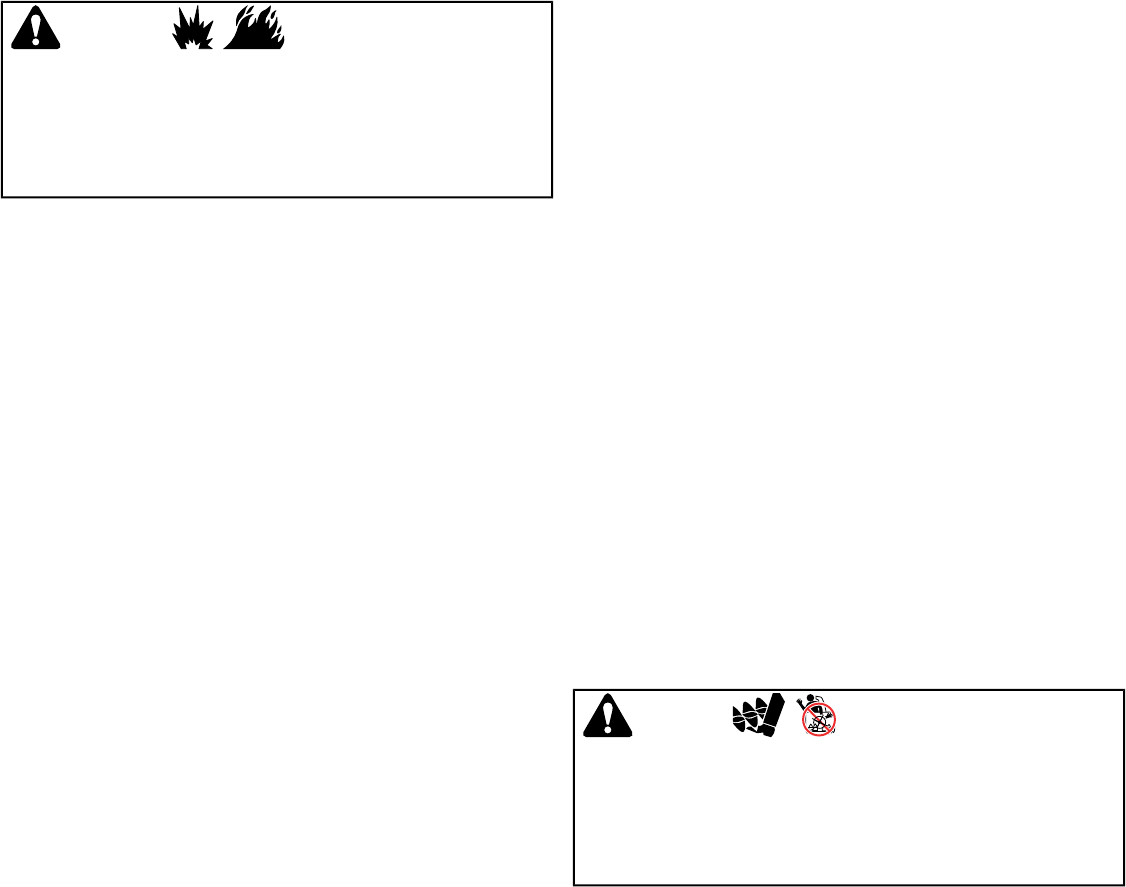
• For models equippedwith electric starting motors, disconnect
the power cord after the engine starts.
• Exercise extreme caution when operating on or crossing
gravel drives, walks, or roads. Stay alert for hidden hazards
or traffic.
• Run the machine a few minutes after throwing snow to
prevent freeze-up of the collector/impeller.
Fuel Handling
WARNING
Fuel and its vapors are extremely flammable and
explosive. Always handle fuel with extreme care.
Failure to observe these safety instructions can cause a
fire or explosion which could result in severe burns or
death.
When adding fuel:
• Never add fuel to a running engine or to a hot engine.
• Turn off engine and let cool at least 2 minutes before
removing the fuel cap and adding fuel.
• Fill fuel tank outdoors or in a well ventilated area.
• Never fill containers inside a vehicle or on a truck or trailer
bed with a plastic liner. Always place containers on the
ground, away from your vehicle, before filling.
• When practical, remove gas-powered equipment from the
truck or trailer and refuel it on the ground. If this is not
possible, then refuel such equipment on a trailer with a
portable container, rather than from a gasoline dispenser
nozzle.
• Keep the nozzle in contact with the rim of the fuel tank or
container opening at all times, until refueling is complete.
Do not use a nozzle lock-open device.
• Replace gasoline cap securely and allow spilled fuel
evaporate before starting the engine.
• Do not overfill the fuel tank. To allow for the expansion of
gasoline, do not fill above the bottom of the fuel tank neck.
• Keep fuel away from sparks, open flames, pilot lights, heat,
and other ignition sources.
• Check fuel lines, cap, and fittings frequently for cracks or
leaks. Replace if necessary.
• Use an approved fuel container.
• If fuel spills, wait until it evaporates before starting engine.
• If fuel is spilled on clothing, change clothing immediately.
When starting the engine:
• Ensure that spark plug, muffler, fuel cap, and air cleaner (if
equipped) are in place and secured.
• Do not crank the engine with the spark plug removed.
• If fuel is spilled, do not attempt to start the engine, but move
the snowthrower away from the area of the spill, and avoid
creating any source of ignition, until the fuel vapors have
dissipated.
• Do not over-prime the engine. Follow the engine starting
instructions in this manual.
• If the engine floods, set choke (if equipped) to OPEN/RUN
position, move throttle (if equipped) to FAST position and
crank until engine starts.
When operating the equipment:
• Do not tip the snowthrower at an angle which causes the
fuel to spill.
• Do not choke the carburetor to stop the engine.
• Never run the engine with the air cleaner assembly (if
equipped) or the air filter (if equipped) removed.
• If you drain the oil from the top oil fill tube, the fuel tank must
be empty or fuel can leak out andresult in a fire or explosion.
When transporting equipment:
• Transport with fuel tank EMPTY, or with fuel shut-off valve
OFF.
When storing gasoline or equipment with fuel in the tank:
• Gasoline is highly flammable and its vapors are explosive.
Fumes may travel to a distant ignition source and an
explosion and/or fire may result.
• Handle gasoline carefully. Never store a unit, with fuel in the
tank, indoors in a poorly ventilated enclosure where fuel
fumes could reach an open flame, spark, or pilot light, such
as a furnace, water heater, or clothes dryer.
• Store away from furnaces, stoves, water heaters, or other
appliances that have pilot light or other ignition source
because they can ignite fuel vapors.
Moving Parts
DANGER
Keep hands, feet, and clothing away from rotating parts.
Rotating parts can contact or entangle hands, feet, hair,
clothing, or accessories.
Failure to observe these safety instructions will result in
traumatic amputation or severe laceration.
• Whenever cleaning,repairing, or inspecting thesnowthrower,
make sure the engine is OFF, the engine key is removed,
and all moving parts have stopped.
• Do not put hands or feet near or under rotating parts. Keep
clear of the discharge opening at all times.
• Never operate the snowthrower without proper guards, and
other safety devices in place and working.
• Never leave the snowthrower unattended while engine is
running. Always disengage the auger and traction controls,
stop engine, and remove keys.
4
Not for
Reproduction



